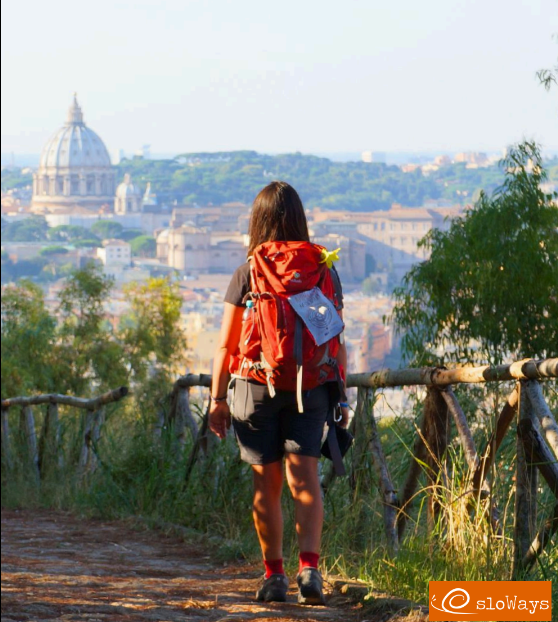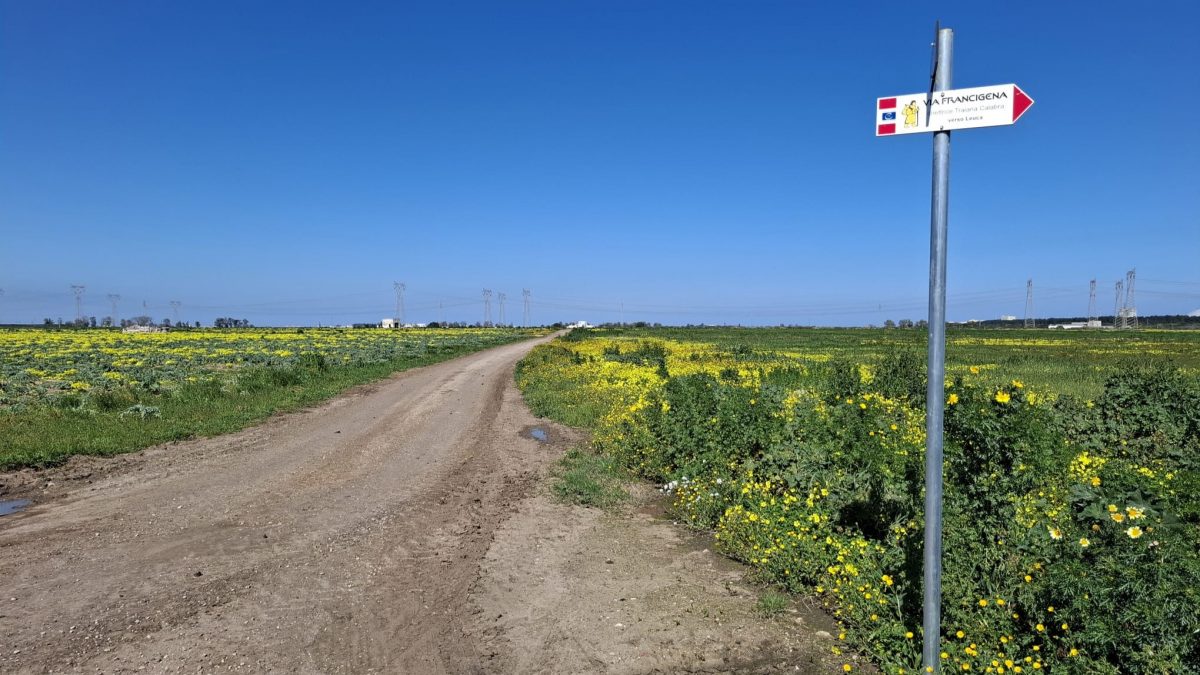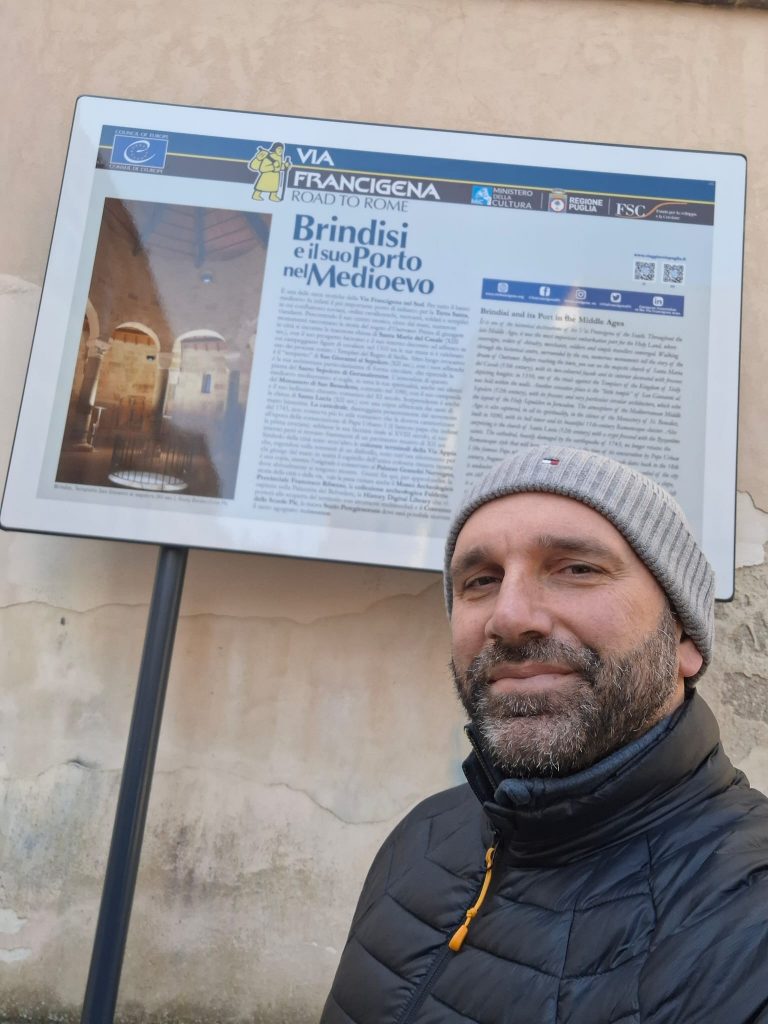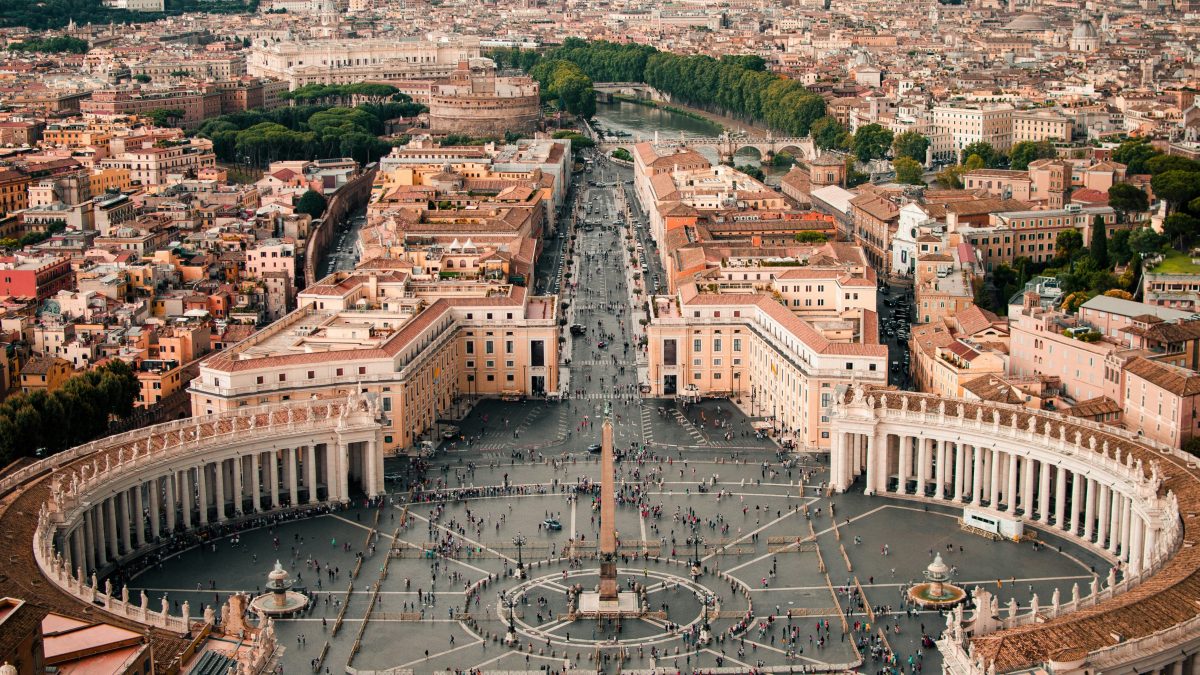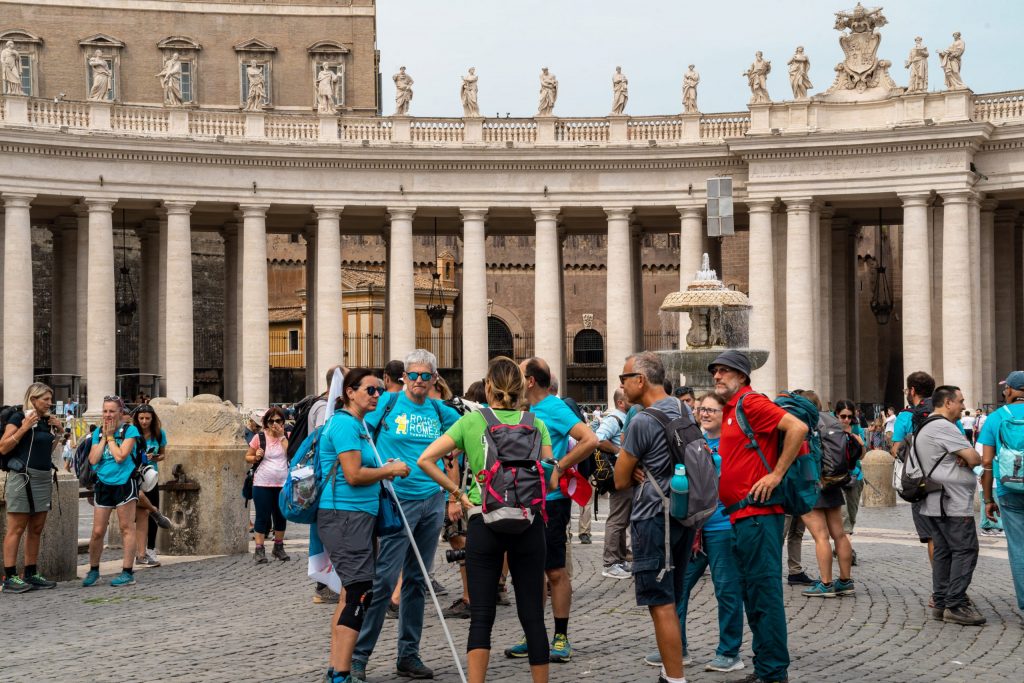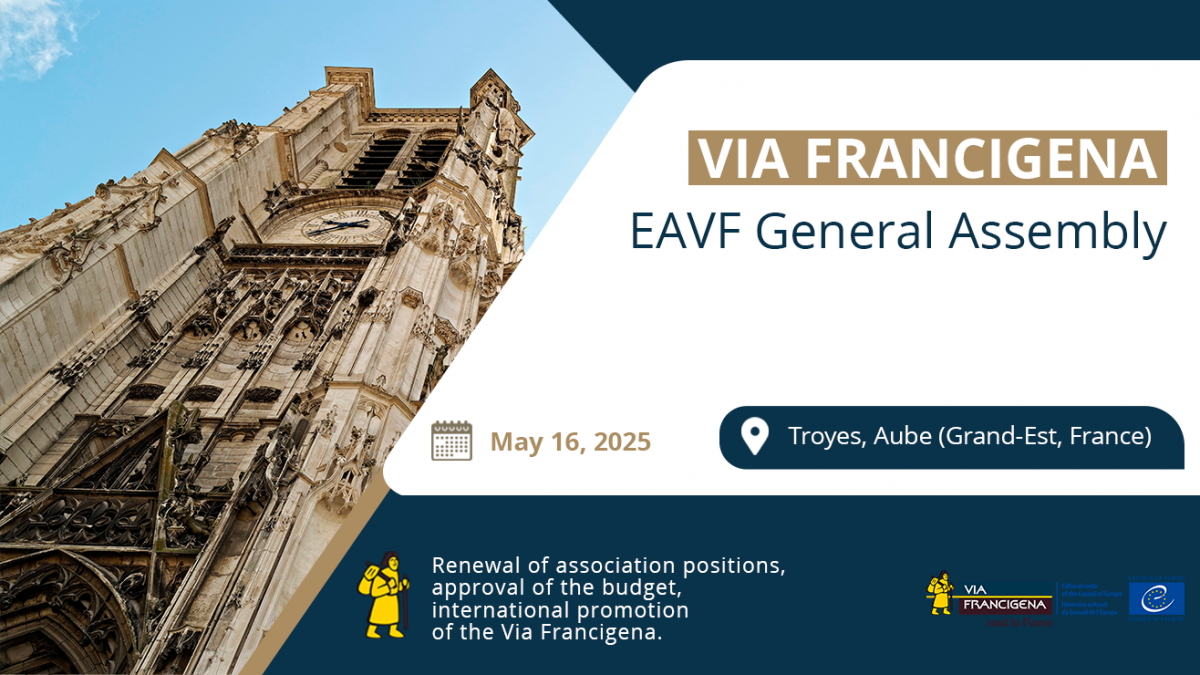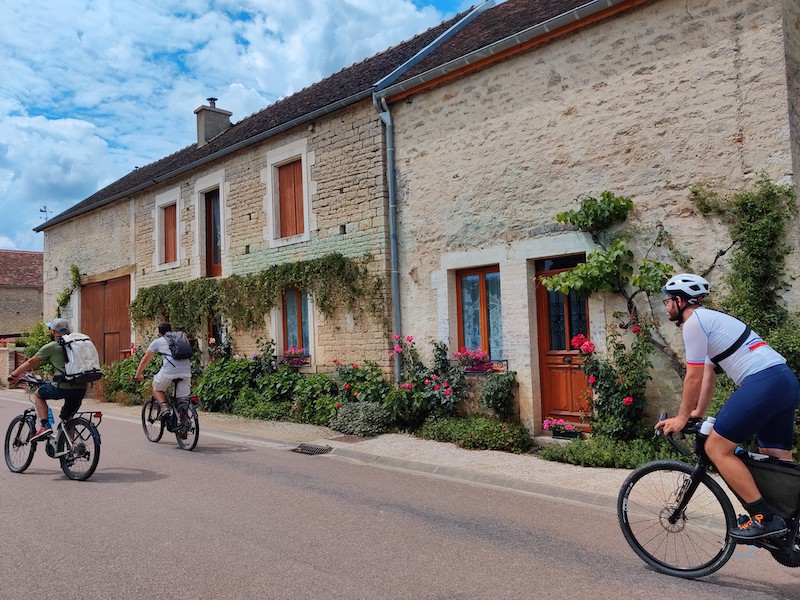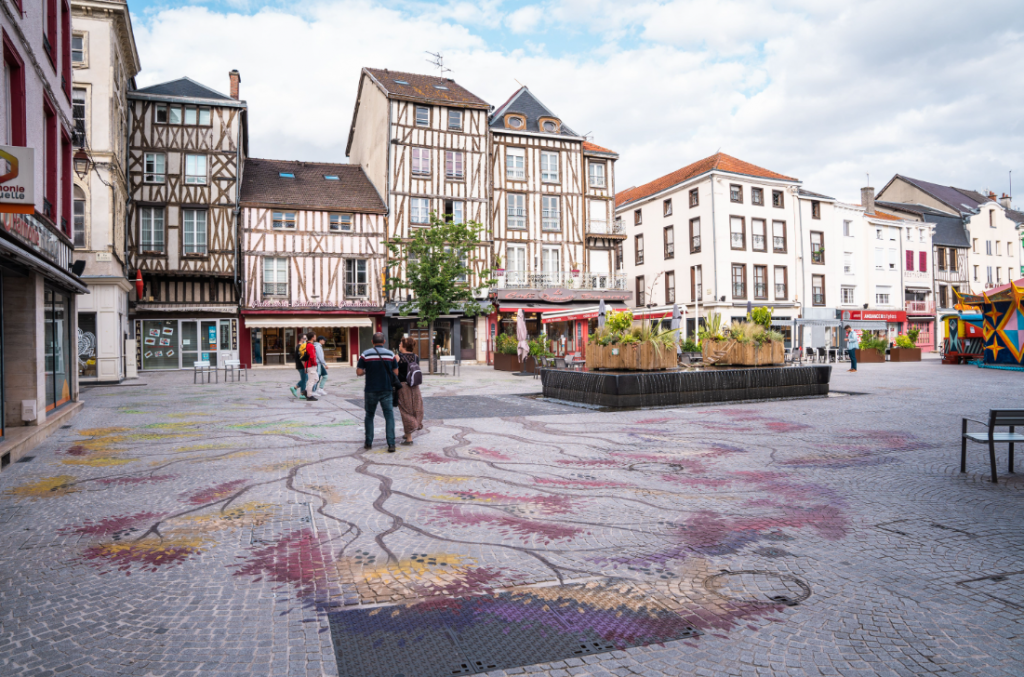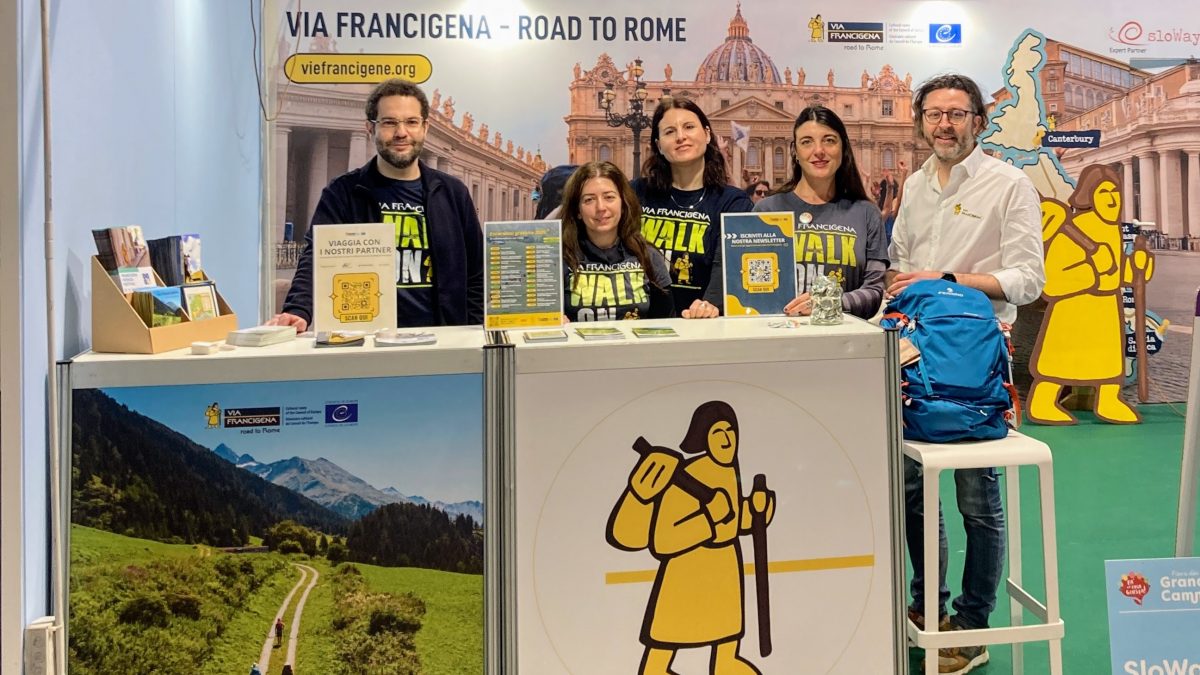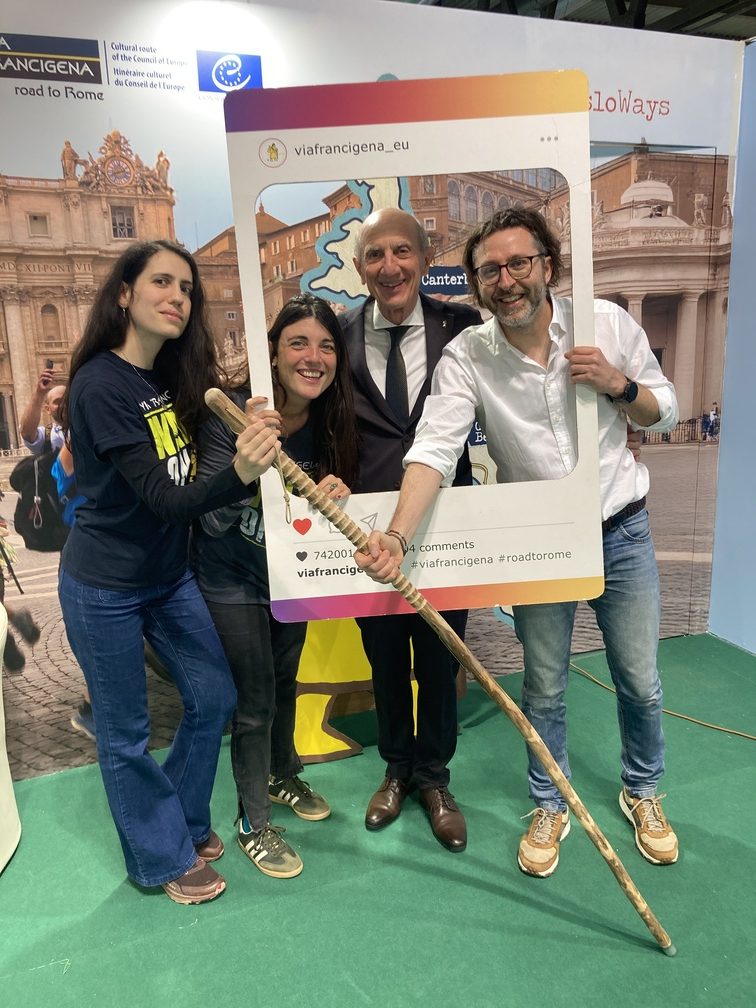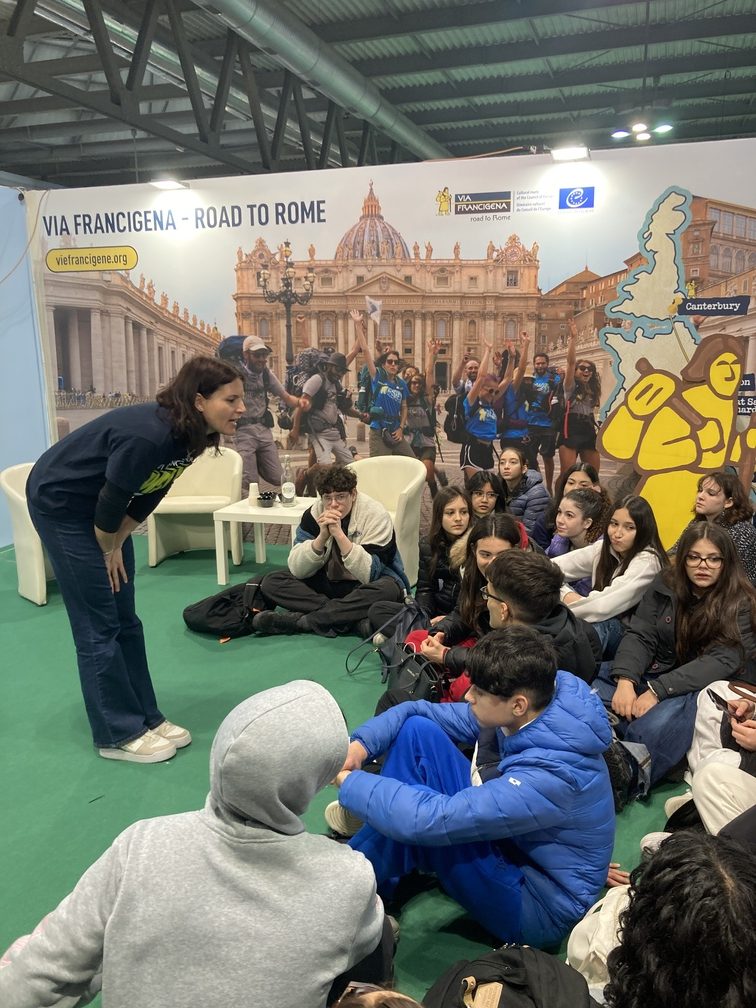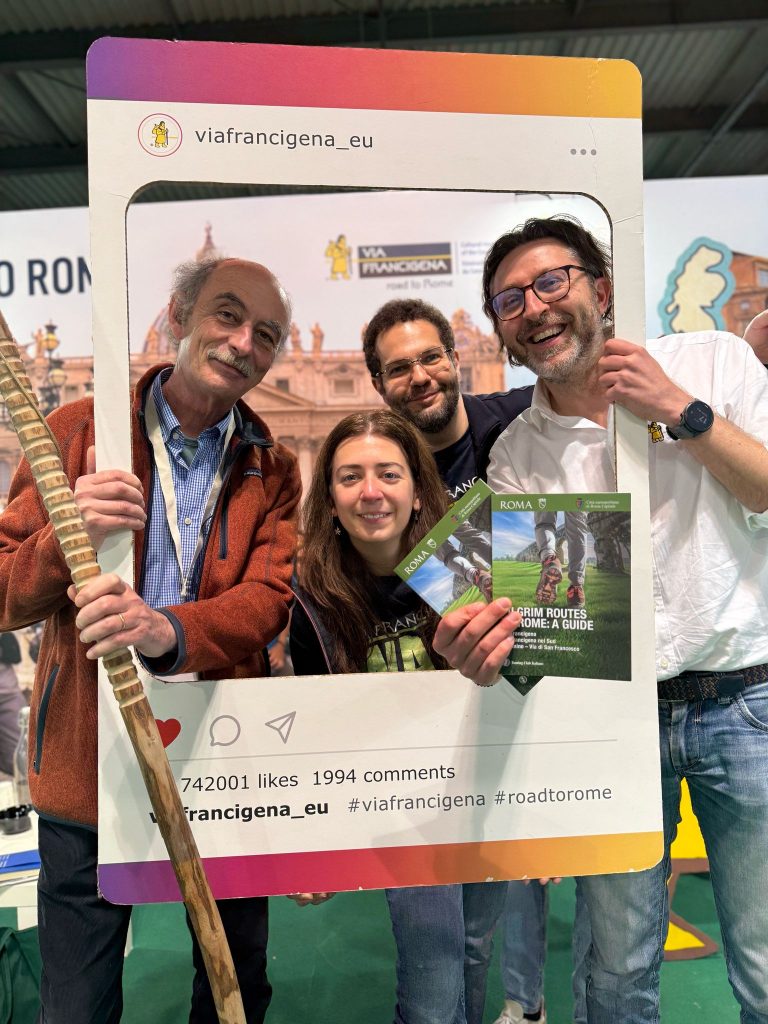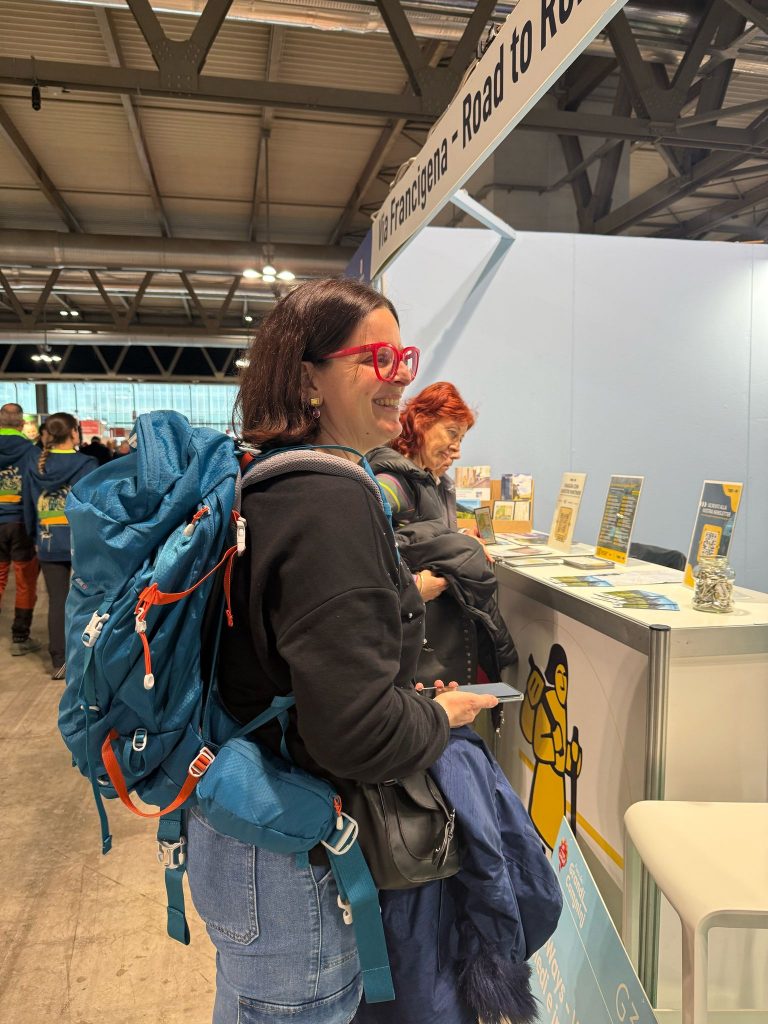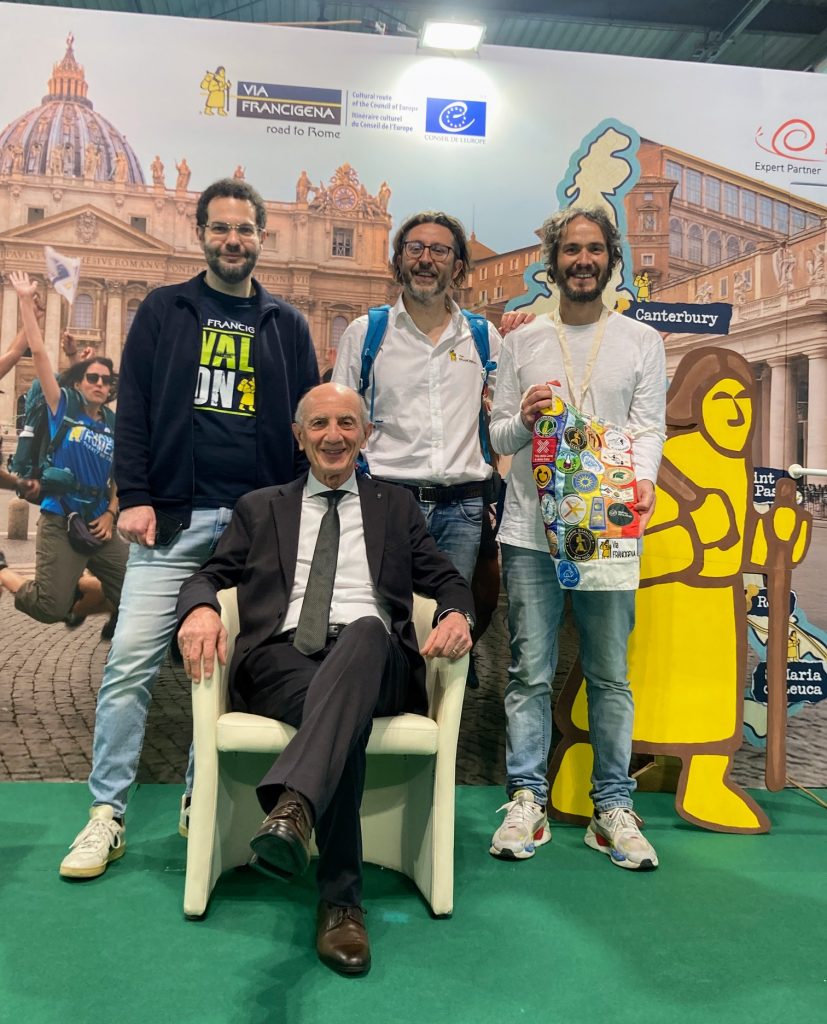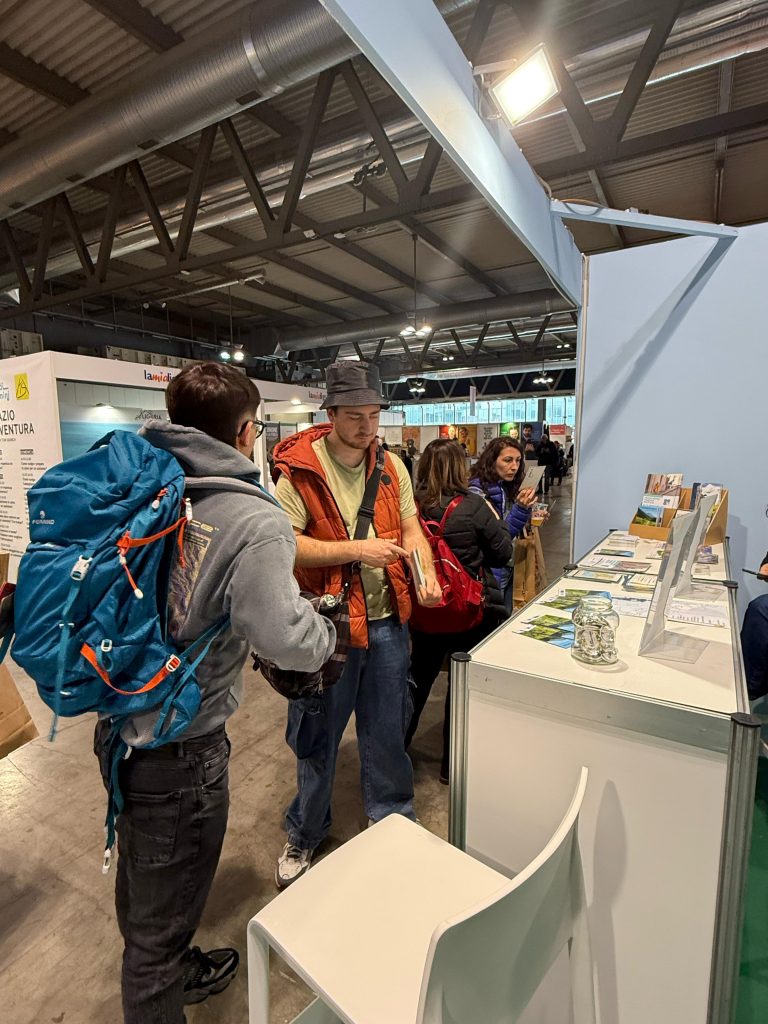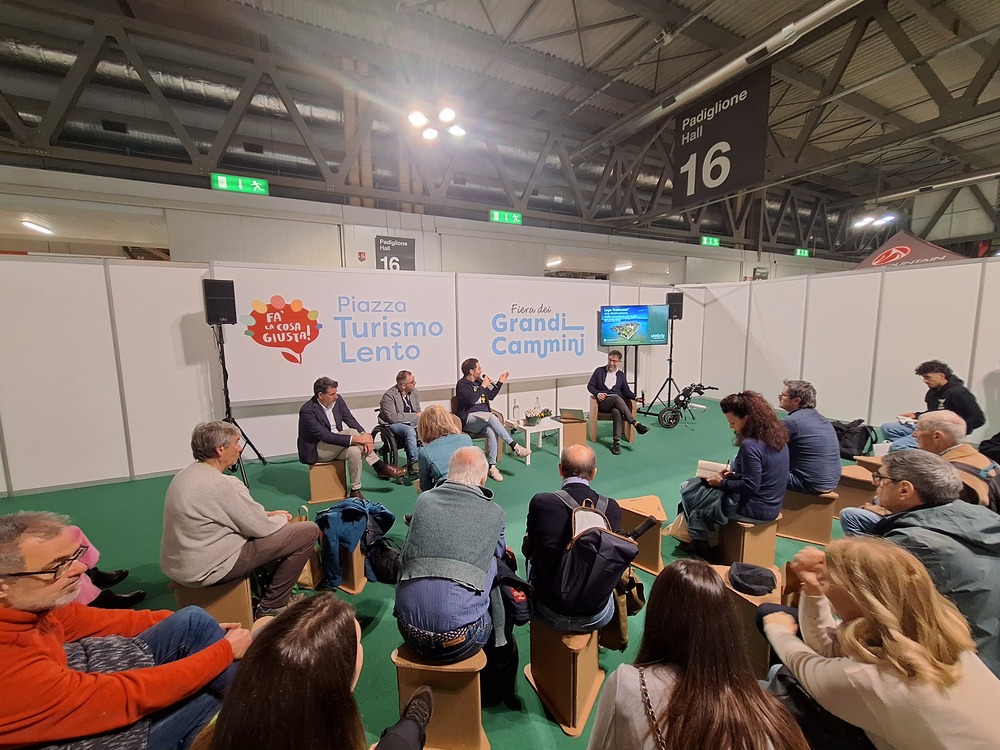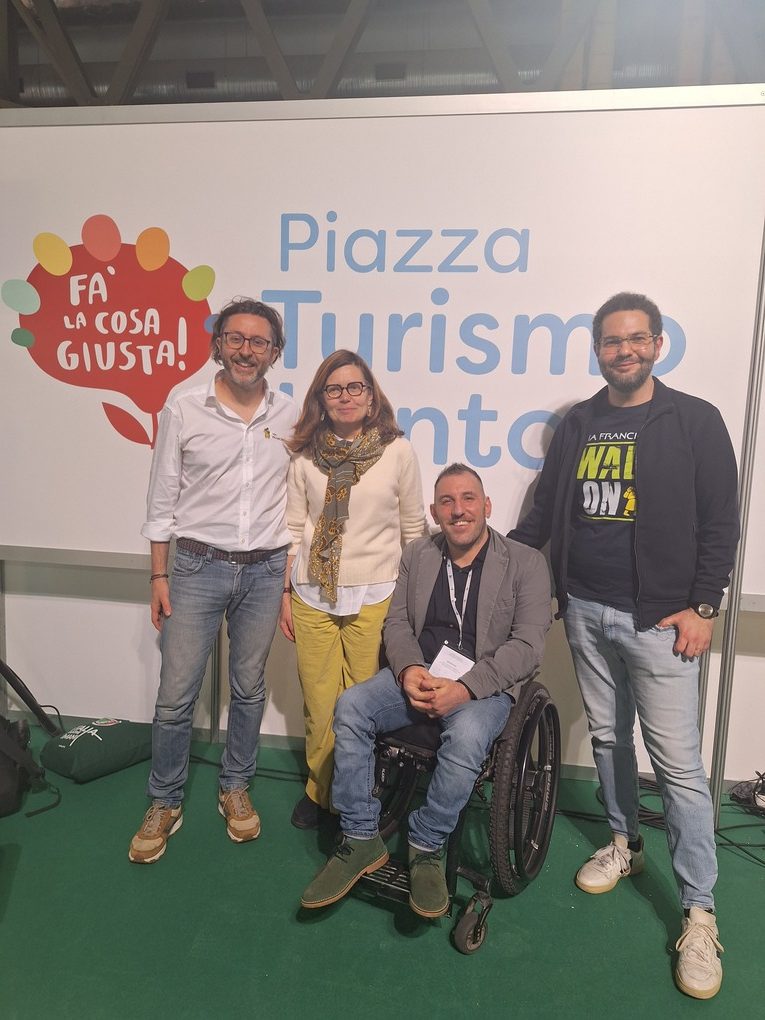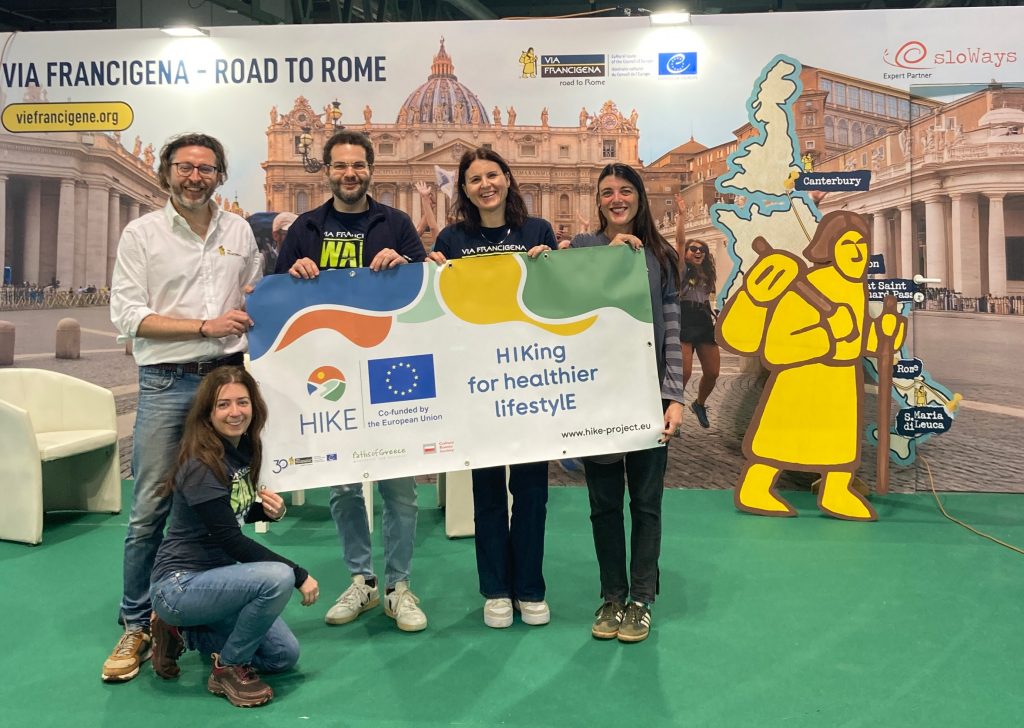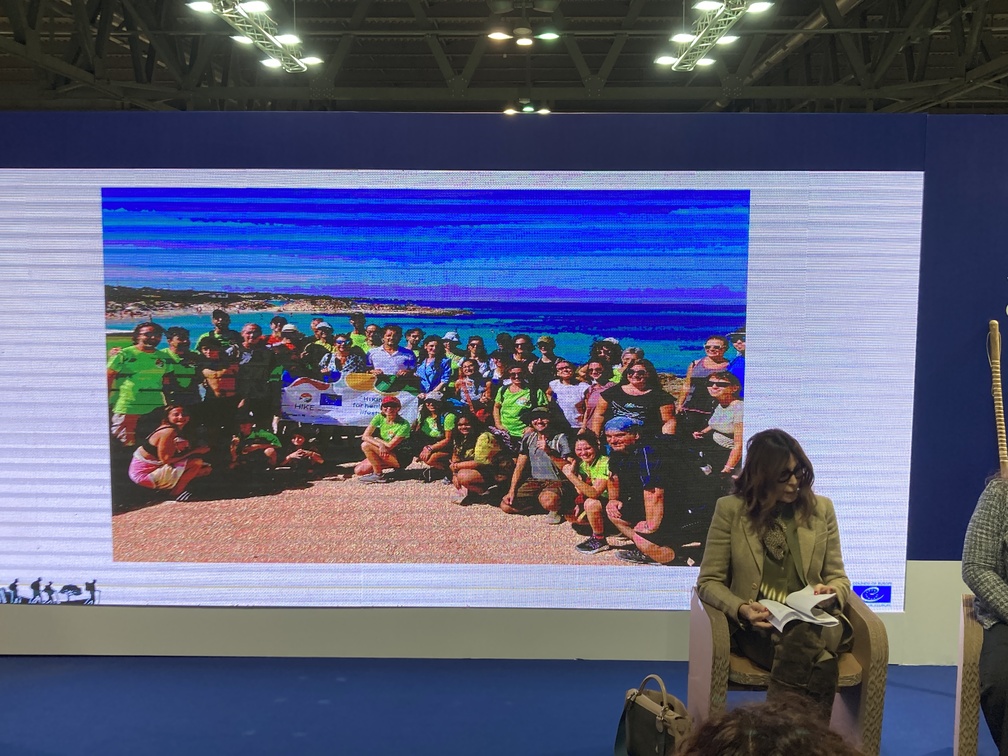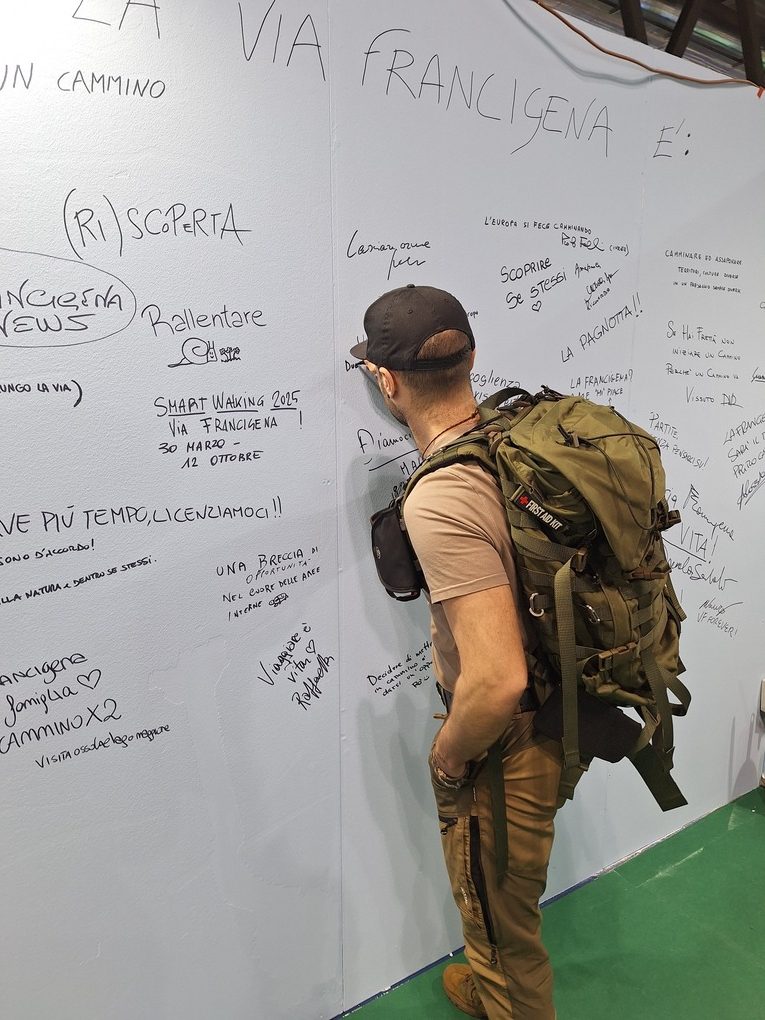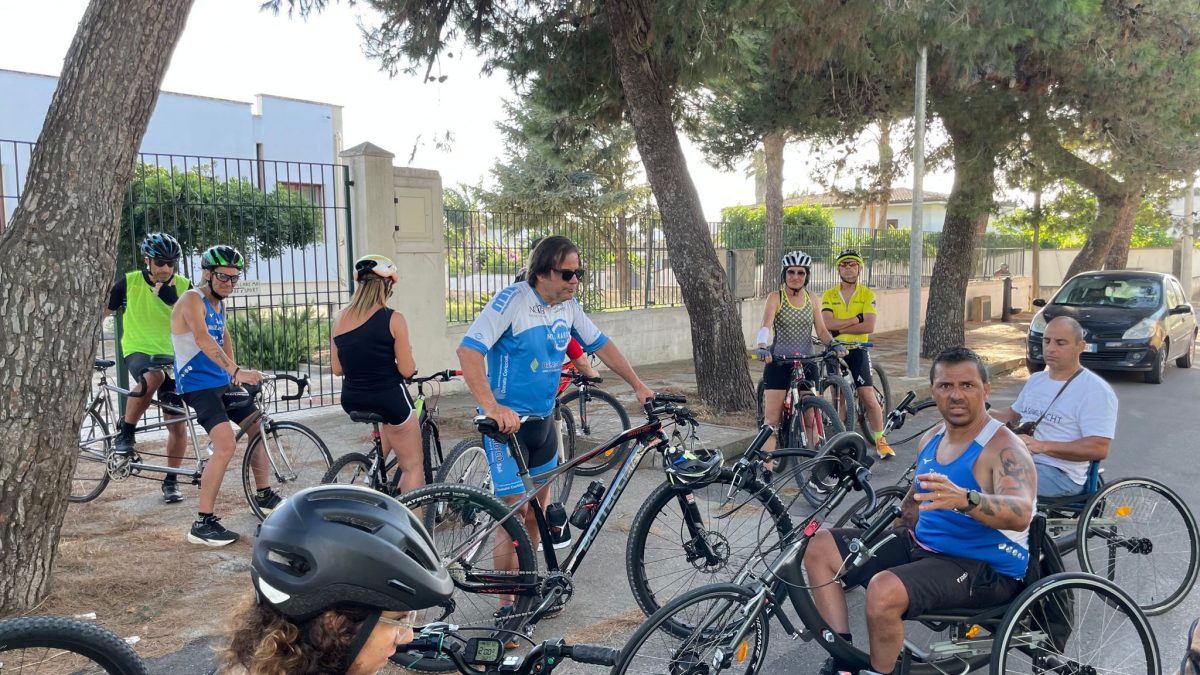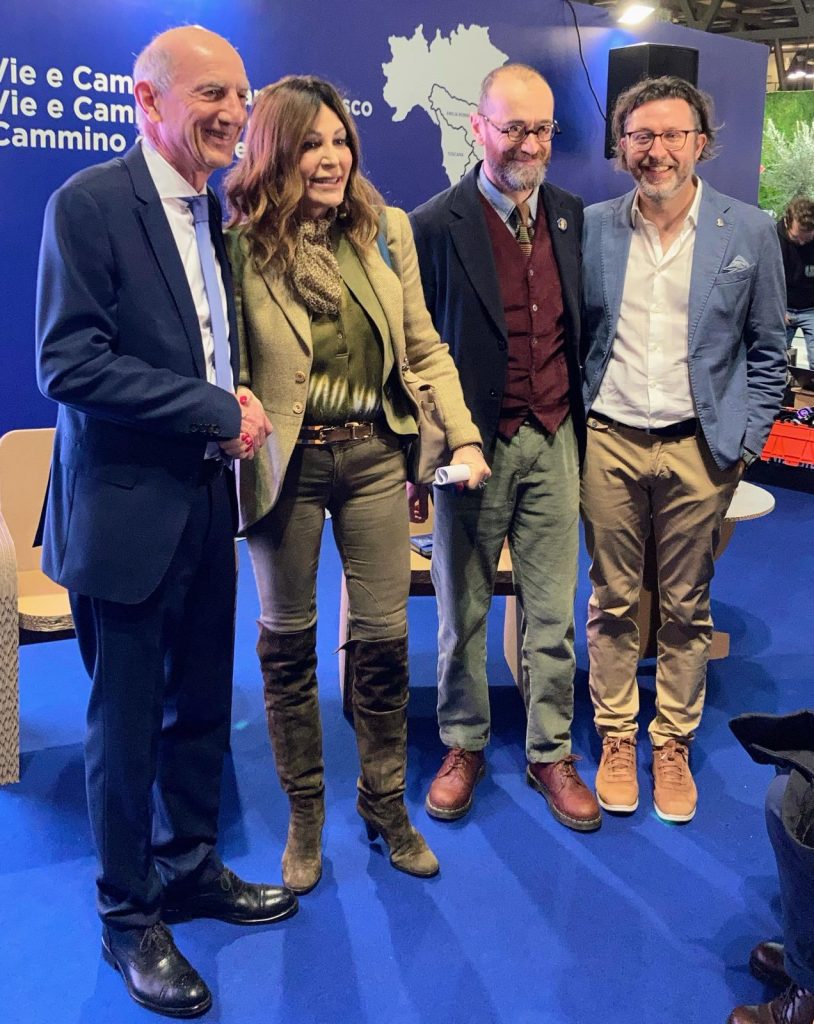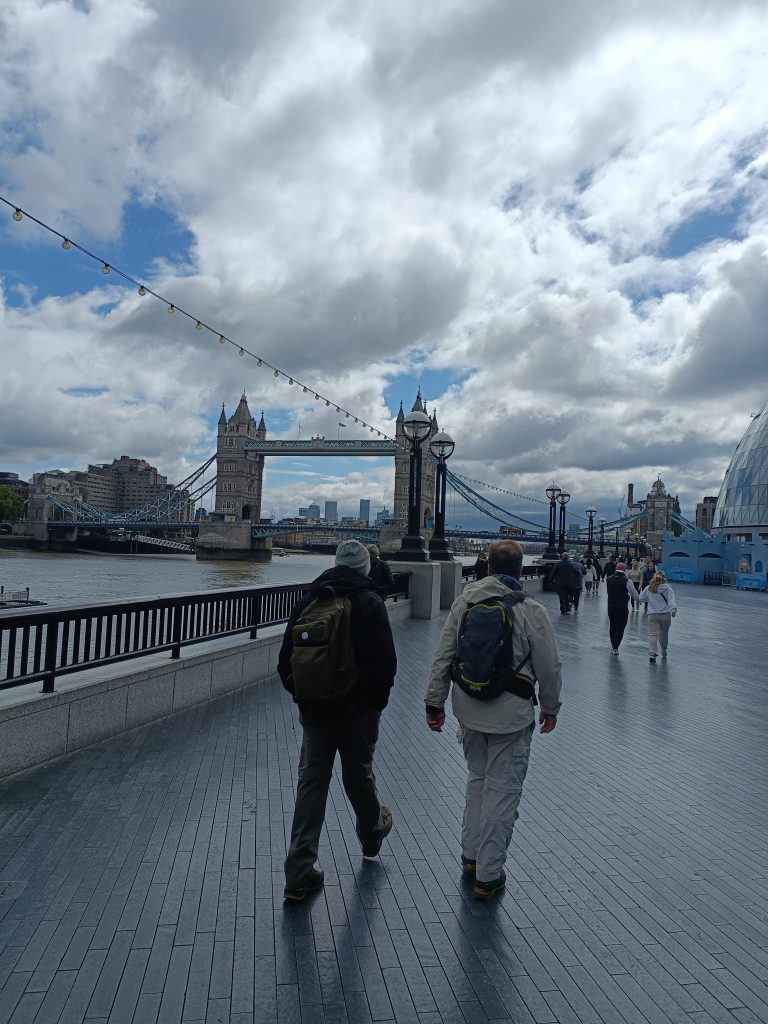EAVF is pleased to relaunch this exciting initiative, promoted by its expert partner Sloways, in search of travel media and content creators.
“Walk the Caminos to Rome: nature, flavours, pilgrims and architecture. Alternative and contemporary insights to Rome”
There are many ways to reach Rome. But only a few follow the footsteps of those who, over the centuries, have arrived on foot—pilgrims, merchants, saints, and knights.
We invite you to join us for a 5-day walking press trip (May 20–24, 2025) to explore historic pilgrimage routes, authentic flavours, and stunning architecture—from ancient ruins to contemporary masterpieces—and to discover a Rome you never expected and have never seen.
We’ll walk the final stages of the Northern Via Francigena, the Way of St. Francis, and the Southern Via Francigena, crossing woods and meadows, charming villages, and the volcanic landscapes of the Alban Hills—until we reach Rome and the Vatican with it’s the unexpected green oases that stretch right into the heart of town.
This journey isn’t only about nature: it’s also a culinary itinerary, with curated gastronomic stops, and a journey through architecture—from imperial ruins to the fluid lines of Zaha Hadid’s MAXXI Museum, via Rome’s Grand Mosque, the largest in Europe, Renzo Piano’s Auditorium Parco della Musica, and the bike paths cutting through neighbourhoods made famous by Italian neorealist cinema.
We’ll arrive on foot at St. Peter’s Square, just like the pilgrims of old, after passing through the city parks of Insugherata, Monte Ciocci, and Monte Mario, where the dome of the Basilica first appears on the horizon.
Each day we’ll walk between 12-14km | 7.5-9 mi, weaving through trails, urban landscapes and storytelling.
In the evenings, we’ll experience the authentic and creative side of the capital, exploring the historic centre, bustling Trastevere, and tasting a mix of traditional and contemporary cuisine.
This is a great opportunity to:
👉 Tell the story of Rome from a new perspective: slow, sustainable, and on foot.
👉 Discover beauty where you least expect it: in the outskirts, in the details, in the local’s sense of place.
Rome awaits. But this time, come on foot.
About Sloways
SloWays -brand of S-Cape Partners and Expert Partner of the European Association of Vie Francigene- is a specialized Italian tour operator offering a wide range of self-guided walking trips across Italy. Each itinerary is designed and operated in-house, ensuring high standards of quality, local insight, and attention to detail.
With over 20 years of experience in the field, the company has developed deep expertise in long-distance trails and historic pilgrimage routes such as the Via Francigena and the Way of St. Francis. SloWays is committed to promoting a form of travel that values slowness, cultural depth, and meaningful connections with the territory.
The company prioritizes sustainability by encouraging low-impact travel, supporting local economies, and collaborating with small, family-run accommodations. Its routes are carefully chosen to take travellers off the beaten path, offering a unique perspective on Italy’s landscapes, traditions, and communities.
SloWays provides expert guidance and logistical support, making walking accessible and enjoyable for a broad audience — from experienced hikers to those approaching this form of travel for the first time.
Included in the Trip
- Transport to and from Rome from EU or UK
- 4 nights in a 3-star hotel, double for single use room
- Meals: 4 breakfasts, 4 lunches and 4 dinners
- Local wine and food tastings
- Transfers by public and private transport
- Luggage transport from Castel Gandolfo to Rome
- 2 trip leaders throughout the trip
- Medical and luggage insurance
Not Included
- Personal expenses during the trip
—————-
What We Offer
- A unique experience
- A fully Hosted trip as specified in the “Included in the Trip” section
- We offering a total of €500 as honorarium for participating content creators
—————-
Who We’re Looking For:
- 4 Italian and 4 foreign Travel writers living in Europe
- 4 Italian and 4 foreign Content Creators living in Europe
—————-
What We’re Asking
Media – Travel Writers
- Bio with photo Portfolio/media kit
- Where have your articles been placed / published in the past 3 years
- Where do you see yourself pitching this trip
- Please specify the expected format and length of coverage, and outline what social media support could be provided (from your personal channels, publications, or both)
—————-
Content Creators
Presentation:
- Bio with photo, including your story, your interest and your social media channels
- To have a following interested in the outdoors and adventure,
- To have 15.000 or more followers across your various social media channels
- Please specify the expected format and length of potential coverage, and outline.
- What social media support can be provided (from your personal channels, the publications, or both)
Before the Event:
- A minimum of 3 stories announcing your participation in the event, shared on your social media channels and including agreed links and tags.
During the Event:
- A minimum of 10 Stories per day on your various social media channels; including agreed links and tags.
After the Event:
- 1 co-created reel-video, shared on your social media channels, including agreed links and tags
- If you have a blog: 1 final blog article including agreed links and tags.
—————-
Consent for Use of Personal Image and Data – GDPR Compliance
Please be advised that a professional photo and video maker will be present during the trip. By participating in this media trip, you give your explicit consent to the use, sharing, and publication – for commercial and promotional purposes – of any images and video footage taken of you during the trip.
Such materials may be used across various platforms, including websites, social media, brochures, and other communication tools related to the promotion of our activities.
All personal data, including photographic and video content, will be processed and stored in accordance with Regulation (EU) 2016/679 (General Data Protection Regulation – GDPR). You have the right to access, modify, or request the deletion of your data at any time by contacting us.
—————-
How to Apply:
Send your application by Monday May 4th to the email address tullia.caballero@sloways.eu, including the following:
- Email subject: Media & Content Creator Application “Walk the Caminos to Rome”
- Your portfolio/media kit including a list of your social media channels, blog, website, YouTube, Podcast channels with number of followers and or readers (if applicable)
More informations here.
